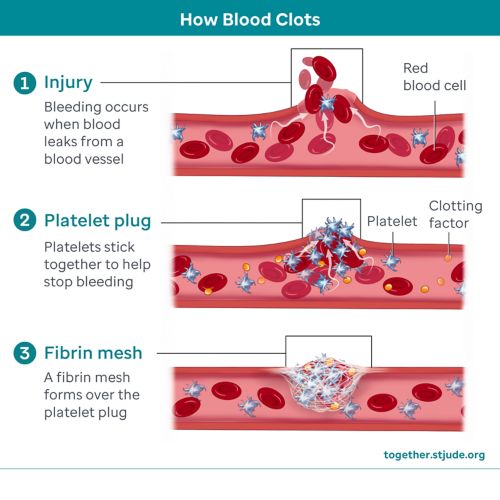Qualitative Platelet Disorders
What are qualitative platelet disorders?
Qualitative platelet disorders (QPD) are rare bleeding disorders that happen when platelets do not work correctly. Platelets are blood cells that help to stop bleeding.
Symptoms of qualitative platelet disorder
Signs and symptoms of a platelet disorder may include:
- Easy bruising
- Prolonged bleeding after a cut or injury
- Nose bleeds
- Bleeding from gums
- Heavy or prolonged menstrual bleeding
- Abnormal bleeding after surgery, childbirth, circumcision, or dental work
Symptoms of qualitative platelet disorders vary from one person to the next. But they are usually mild to moderate.
Causes of qualitative platelet disorders
Qualitative platelet disorders can be inherited or passed down from parents to children through a gene change (mutation). In some cases, the disorder develops later in life (acquired). Some acquired qualitative platelet disorders can be due to medications.
A qualitative platelet disorder can be due to a missing or defective protein on the surface of the platelet membrane. Or it can be caused by a deficiency or abnormality in the platelet granules or their contents (also known as a storage pool disorder). Platelet granules are small sacs inside platelets that store proteins and other chemicals. Some platelet storage pool deficiencies happen when platelets do not empty the contents of the granules into the bloodstream. Other types of deficiency are caused by a lack of granules.
How platelets work to stop bleeding
Platelets stop bleeding through a series of steps that form a platelet plug.
- When a blood vessel is injured, platelets are activated and travel to the site of the injury.
- Platelets stick to the blood vessel and release chemicals from inside the granules into the bloodstream.
- The chemicals signal more platelets to stick together. This forms a platelet plug.
- The chemicals inside the granules also help injured blood vessels to constrict (tighten) to help stop bleeding.
- A fibrin mesh covers the platelet plug to hold it in place.
Diagnosis of qualitative platelet disorders
Qualitative platelet disorders are diagnosed based on your child’s family and medical history, physical exam, and lab tests. Your doctor may ask you about any changes in bleeding or bruising, recent illnesses, or medicines your child is taking.
Tests may include:
- Complete blood count (CBC) to measure the number and size of blood cells
- Clotting factor tests to measure the levels of specific clotting factors in the blood
- Platelet function tests to measure how platelets work
- Further tests like genetic testing or very specialized testing can be performed
Treatment of qualitative platelet disorders
If your child has a qualitative platelet disorder, they will usually be treated by a hematologist, a doctor who specializes in treating blood disorders. Most people with a qualitative platelet disorder only need treatment during surgical procedures, dental work, or after an injury.
Treatments may include:
- Antifibrinolytic medicines to help stop bleeding
- Desmopressin to help increase clotting factor. This medicine may not be useful in alpha granule deficiency.
- Platelet transfusions to increase platelet count
If your child has a platelet disorder, they should not take certain medicines unless instructed by a health care provider. Some medicines increase the risk of bleeding. These include aspirin, nonsteroidal anti-inflammatory drugs (NSAIDs) such as ibuprofen and naproxen, and blood thinners. These drugs can make bleeding symptoms worse.
Questions to ask your care team
- How might qualitative platelet disorders affect my child's daily life?
- What type of QPD does my child have?
- What signs or symptoms of QPD should we watch for, and when should we seek medical attention?
- What treatment options are available to help manage my child's condition, and what are the potential side effects?
- Are there any specific activities or medicines my child should avoid?
- Should family members be tested for a platelet disorder?
- Can my child’s disorder be passed on to their children in the future?
Key points about qualitative platelet disorders
- Qualitative platelet disorders (QPD) are bleeding disorders caused when platelets do not work properly.
- Bleeding symptoms can vary. But they are usually mild to moderate.
- A qualitative platelet disorder is diagnosed and treated by a hematologist.
- Treatment is usually only needed in cases of surgery or injury.
- People with QPD should avoid some medicines and seek medical care if excessive or prolonged bleeding occurs.
—
Reviewed: September 2024




